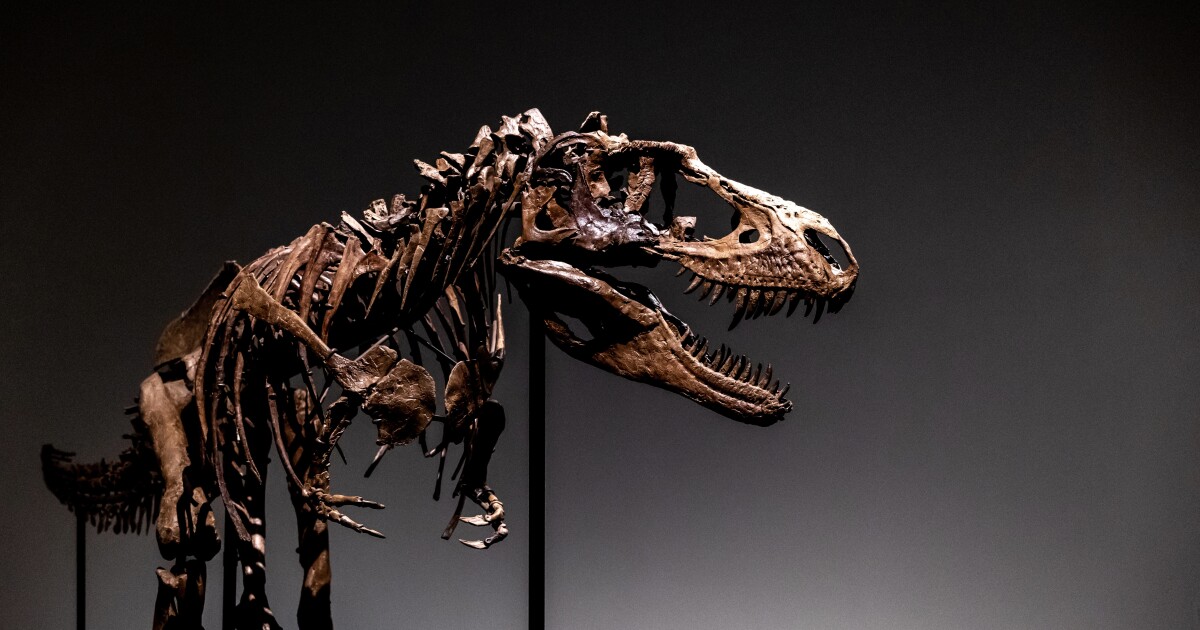

A Tyrannosaurus rex skeleton that was set to be auctioned off for a high price was pulled after questions arose about the legitimacy of claims in its marketing.
Christie’s auction house was set to auction off a T. rex skeleton named Shen for an estimated buying price of between $15 and $25 million, the New York Times reported. It was to be the first T. rex skeleton sold in Asia, its page on Christie’s website boasted. However, experts expressed questions about some of the claims in its marketing, noticing several irregularities and unusual similarities to other T. rex skeletons. Just 10 days before the auction was set to place, the auction house announced it was pulling the specimen for further examination.
“After consultation with the consignor of the Tyrannosaurus rex scheduled for sale on 30 November in Hong Kong, Christie’s has decided to withdraw the lot,” a spokesman for Christie’s, Edward Lewine, said in a statement obtained by the outlet. “The consignor has now decided to loan the specimen to a museum for public display.”
A TYRANNOSAURUS REX SKULL COULD BE YOURS. HERE’S HOW MUCH IT WILL COST
He added that the skeleton would “benefit from further study.”
The move is a significant blow to Christie’s, as the auction of Shen was much hyped in its marketing.
“It is an honour to be entrusted with the first auction in Asia of a T. rex skeleton – a groundbreaking moment for the market in the region. This is a world-class specimen for museums and institutions, and its auction in Hong Kong in November offers an unprecedented opportunity for APAC collectors to own an exceptional piece of our global natural history,” Francis Belin, president of Christie’s Asia Pacific, wrote on Christie’s website.
However, some claims about the skeleton came into question, particularly when a lawyer for the Black Hills Institute of Geological Research, a South Dakota-based fossil company, asked the auction house about its similarity to Stan, another T. rex skeleton auctioned by the house previously for over $30 million. Researchers who worked on Stan noticed that Shen had some features unique to Stan, bringing into question the originality of the new skeleton.
“They’re using Stan to sell a dinosaur that’s not Stan,” Peter Larson, president of the Black Hills Institute, told the outlet in an interview before the sale was called off. “It’s very misleading.”
He went on to praise Christie’s when the outlet contacted him again following news of the skeleton’s withdrawal.
Scientists have yet to find a T. rex fossil with every bone intact, so displays must be supplemented by casts from other specimens. Christie’s claimed Shen was “museum standard and is 54% represented by bone density,” despite the fact that the skeleton only contained 79 original bones out of an estimated total of 300-380.
CLICK HERE TO READ MORE FROM THE WASHINGTON EXAMINER
Shen was unearthed in Montana and likely wandered the Earth 68 million to 66 million years ago during the Cretaceous Period, the website claims.






